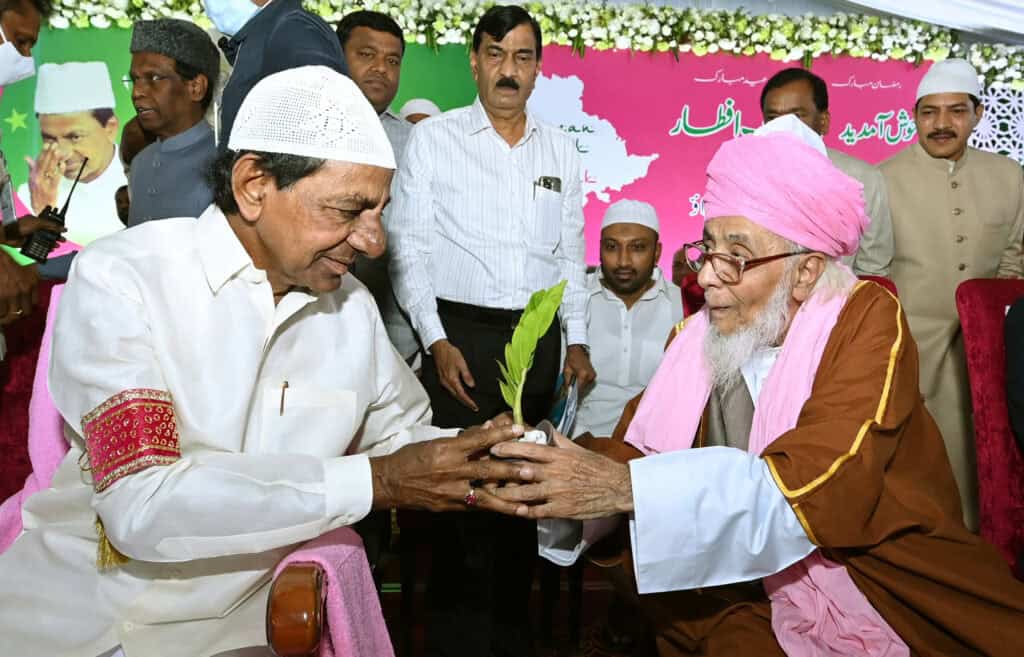
Hyderabad: The Chief Minister’s State Iftar has sparked debate this Ramzan, drawing criticism from activists, non-governmental organisations, and political activists. Critics of the annual event have described it as wasteful expenditure, even lavish, and urged the Telangana government to redirect the funds towards more pressing needs.
However, several factors must be considered before either criticising or supporting the State Iftar. These include its genesis, budgetary classification or head of account to understand the scheme better, allocation and expenditure trends, changes introduced by the new government, and the existence of similar schemes for other communities.
The scheme was introduced in FY 2015-16 by the Telangana Rashtra Samithi (TRS) soon after assuming power, with a modest budget. Over the years, the allocation increased, though actual expenditures fluctuated due to various factors, including the COVID-19 pandemic.

Iftar and Christmas feast
Official data points to the budget head under which the scheme is classified as “Dawat-e-Iftar and Christmas Feast.” This suggests that, contrary to public perception, the funds are not exclusively allocated for Iftar but also cover the State Christmas Feast, which, much like the Dawat-e-Iftar, is organised at the LB Stadium in Hyderabad.
Data obtained through the Right to Information Act reveals significant fluctuations in allocation and expenditure over the years. In FY 2015-16, the scheme was allocated ₹15.37 crore, but actual spending exceeded this, reaching ₹29.37 crore. The following year, both allocation and expenditure stood at ₹30 crore, while in FY 2017-18, the allocation remained unchanged, but expenditure increased to ₹44.5 crore. From FY 2018-19, the budget saw a significant rise to ₹66 crore, except in FY 2019-20, when it was reduced to ₹33.09 crore. Despite this reduction, spending that year was the highest in the given period, reaching ₹68.5 crore.
During the pandemic years (FY 2020-21 and FY 2021-22), expenditure declined to ₹21.74 crore and ₹17.39 crore, respectively, despite the budget allocation remaining at ₹66 crore. More recently, spending has fluctuated, with ₹45.83 crore spent in FY 2022-23 and ₹26.75 crore in FY 2023-24. For FY 2024-25, while the budget remains ₹66 crore, no expenditure has been recorded so far. These trends indicate inconsistent utilisation of allocated funds, with some years witnessing overspending, while others reflecting significant underspending.
Expenditure in 10 years
Over the ten-year period from FY 2015-16 to FY 2024-25, the total budgetary allocation for both Iftar and Christmas amounts to ₹504.46 crore, while total expenditure amounts to ₹331.58 crore.
Beyond organising Iftars in masjids, the previous government had also distributed Ramzan Gift Packs, which included clothes for underprivileged beneficiaries. The Christian community has received similar benefits.
A comparable welfare initiative, which was perhaps even grander given the scale, planning, and those involved, was introduced in 2017 under the BRS government. This was the Bathukamma Sarees distribution scheme for women from weaker sections holding food security cards. Reports suggest nearly one crore sarees were distributed annually. The current government, under Chief Minister A. Revanth Reddy has expressed its intent to continue this initiative.
Those opposing the State Iftar have some merit. They argue that while funds are being allocated for State Iftars, the Telangana government has failed to release funds for students under the fee reimbursement scheme. No student has received fee reimbursement this academic year. The Students Islamic Organisation (SIO), in partnership with the NGO ASEEM, has highlighted this glaring shortfall, raising concerns over financial mismanagement and misplaced priorities.
This year, it remains unclear whether Ramzan Gift Packs will be distributed, with reports suggesting that the initiative has been discontinued. If confirmed, this could mark a policy shift in the government’s approach towards such welfare schemes, potentially inviting greater criticism. In previous years, at the very least, beneficiaries were assured of a new pair of clothes, a small and perhaps meaningful relief for many underprivileged families.



